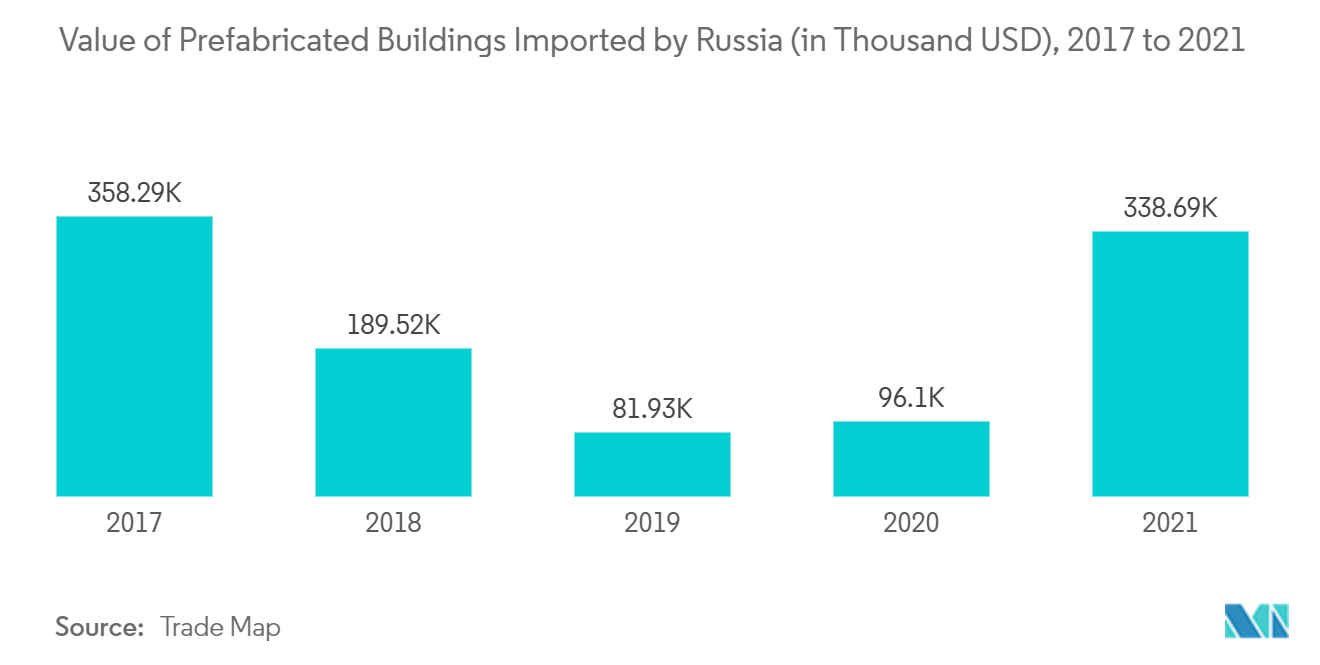Market Trends of Russia Prefabricated Buildings Industry
This section covers the major market trends shaping the Russia Prefabricated Buildings Market according to our research experts:
The Demand for Prefabricated Building is Increasing in Russia
On September 2022, the Ministry of Construction and Housing of the Russian Federation has approved an Action Plan (Roadmap) aimed at creating the regulatory and institutional framework necessary for the widespread introduction of modular construction technologies in Russia. Some of the benefits of utilizing prefabricated buildings are faster on-site construction, reduced effects of uncontrolled factors, higher quality and consistency, cost efficiency, reusability, less raw material waste, and reduced safety hazards. In the past, the Russian government established requirements for the use of wood in the public housing construction program which has increased the demand for wood in prefabricated building construction.
Increasing demand for energy-efficient buildings is an emerging trend in the market. Buildings account for almost 40% of the world's energy consumption, so the energy production required for buildings is capital-intensive. Modular buildings are energy efficient. As a result, the demand for airtight buildings has increased significantly because they are highly insulated and energy efficient, so they can produce as much renewable energy as possible. These buildings are equipped with ground-source heat pumps (GSHP) and photovoltaic (PV) systems and also have a passive solar structure in the panel housing. In addition, prefabricated contractors and architects design these building models that include features such as solar panels, wind turbines, and even rainwater systems. As a result, such factors are expected to drive the growth of Russia's prefabricated buildings market during the forecast period.

Increasing Costs of Traditional Building Construction over Prefab is Driving the Market
According to the Russian Federal State Statistics Service, the average cost of residential housing construction in Russia has been increasing annually. The figures exceeded 49.2 thousand Russian rubles (USD 0.70 Thousand) per square meter in 2021. To compare, in 2020 it cost approximately 4.7 thousand Russian rubles (USD 0.067 Thousand) less to build one square meter of residential housing. The residential building construction costs continuously rose in Russia, which was driven by high international demand. In addition, construction materials prices are spiking in the country due to the Russia-Ukraine war. The raising costs of conventional construction are driving the adoption of prefabricated structures in the country.
Meanwhile, the major reason behind the construction prices spiking was the rise in prices for building materials like cement, steel, and other insulation materials. For instance, the average price of cement in Russia reached around 6.65 thousand Russian rubles (USD 0.095 Thousand) per metric ton in October 2022. The price steadily rose over the period from March to August 2022. Moreover, the high demand for land and shortage of materials are further increasing traditional construction costs. Currently, prices are growing more sharply than they have in over five decades. In addition, most of the construction and civil engineering companies experienced supply shortages. Thus, the supply shortages in construction materials and rising costs are fuelling the prefab structures market in the country.


